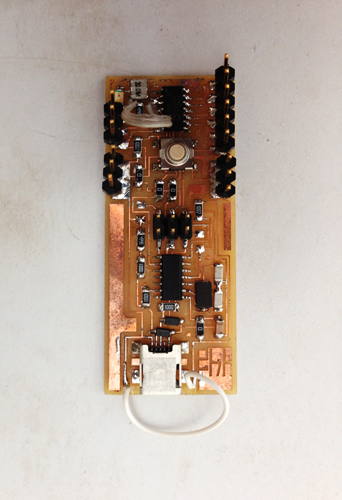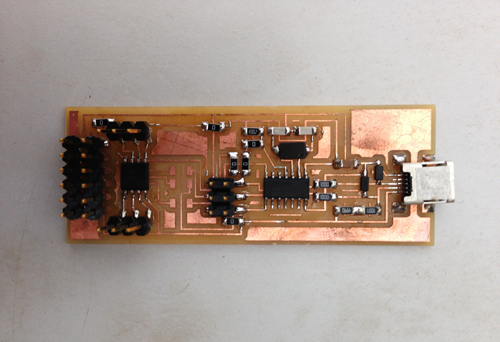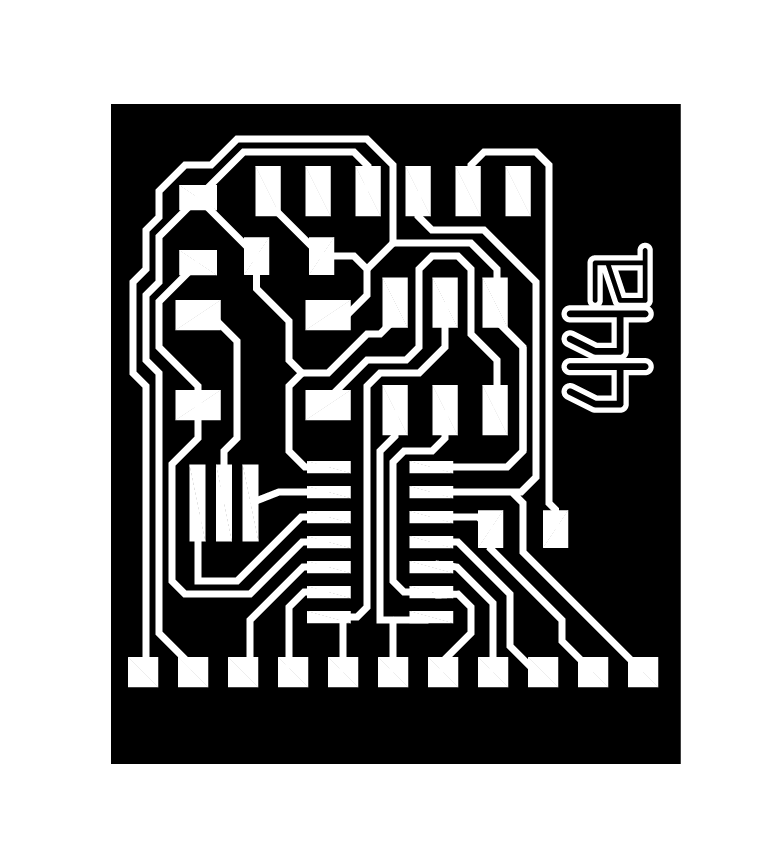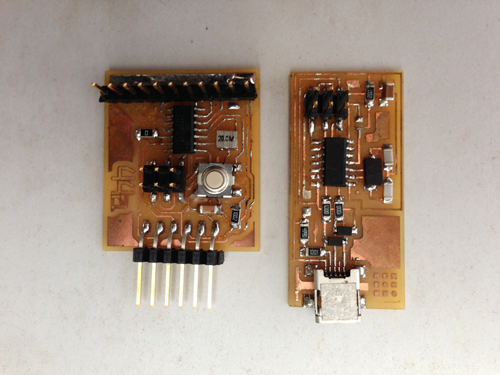Final Project Progress :: 44aRDUINO
background
FabLab CEPT needs some Arduinos.
We don't need uber fancy proto-boards, or really anything "brand-named." And, for most prototyping and/or learning situations, nothing more than a few pins are necessary. Additionally, for most things, keeping the board small is a plus. So, while I was coming up with a small Attiny44a based IC for a few of the input/output assignments, I realized that a Attiny 44a-based arduino would be perfect to fill this need. They would be small, simple, quick to build, and be made from simple, cheap components within the standard FabLab Inventory. Thus, the "44aRDUINO" was born.
key objectives
- small
- Attiny44a - based
- as re-configurable as possible (if wanted)
- on-board programmer (another Attiny44a)
- "perfected" .png files (for best milling using FabModules)
- VCC and GND pins
applications & implications
The 44aRDUINO is meant as a low-cost, small-footprint, prototyping board. It will be a great starter project as well as an tool for teaching electronics as it only has as much as what is needed when one is just learning.
invention & IP
The 44aRDUINO will be completely open-sourced. I am not an electronics genius, I encourage any and all to make improvements to the design. If it becomes a popular project it would "live" on this page (or another FabLab-related page) as it is so tied to the inventory of FabLabs around the word. So, I have decided that the CClicance below would be the most applicable.

44Arduino is licensed under a Creative Commons Attribution-ShareAlike 4.0 International License.
progress
early-May
So, I have figured out that this project is not as simple as slapping these two boards together (see board-that-didn't-work-but-look-pretty)... they key challenge is getting the IC to communicate via USB (just like a normal Arduino) -- thus enters V-USB.

board-that-didn't-work-but-look-pretty
On the V-USB front, I'm a little lost. I think that I will have to create some semi-customized .c files or a make file. To learn this tool-chain, I decided to make one of the USBTinys. But, I need some help getting the thing programmed.

my version of the TinyISP
mid-April
First attempts at a board... no on-board programmer... 11 pins (1 VCC, 1 GND, 1 Dig, 7 Analog/Dig, 1 TX/Analong/Dig, 1 RX/AnalogDig) +reset button.

traces

The board with the FabISP (which is needed for programming).